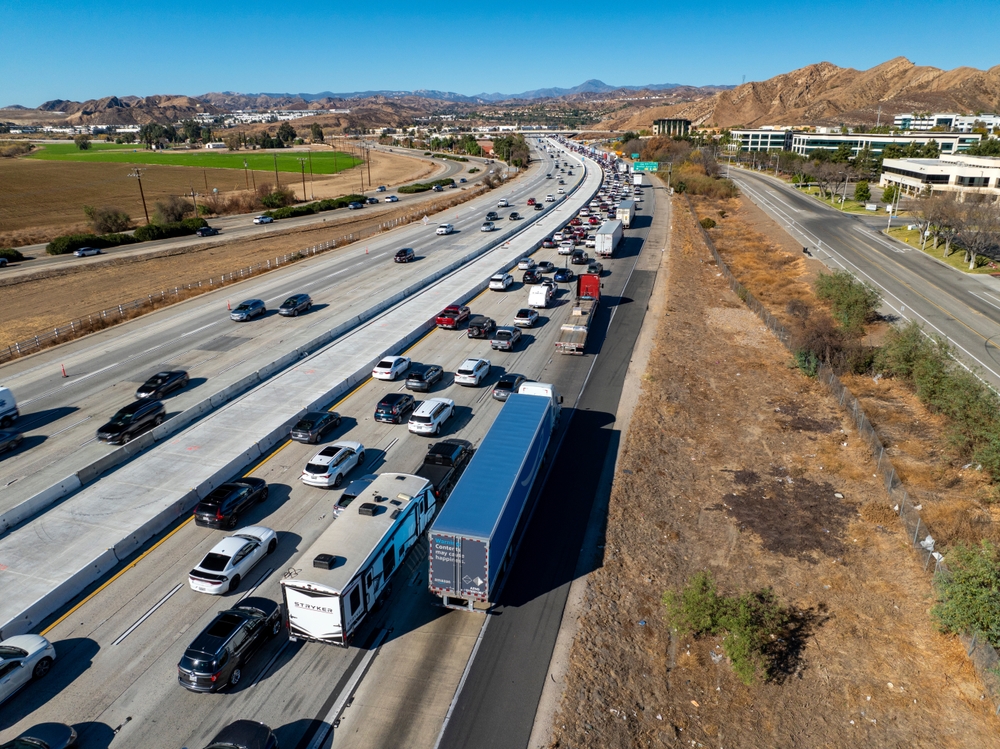
Freight carriers, fleet owners, and heavy-duty vehicle manufacturers may be viewing the recent hydrogen fuel revival with cautious optimism. The emphasis may lean more toward caution because hydrogen fueling station initiatives have been on the table before and never fully materialized.
Back when champion bodybuilder and Hollywood actor Arnold Schwarzenegger became California’s “Governator,” he signed legislation intended to eventually blanket the Golden State with zero-emission hydrogen stations. The state law he signed required 50 to 100 such stations by 2010. Less than 50 are reportedly operational more than a decade later. That being said, California’s recently renewed commitment to powering up passenger vehicles has attracted the attention of medium- and heavy-duty vehicle users and manufacturers.
“These announcements have created an unprecedented outlook for hydrogen fueling station network development in California,” a recent California Air Resources Board (CARB) report states. “By 2026, the total hydrogen fueling capacity in the state would be sufficient for cumulative deployment of approximately 250,000 FCEVs in California.”
California’s officials are focused on transitioning passenger vehicles in an effort to get the most bang for their zero-emissions buck. But some trucking industry insiders believe that hydrogen fuel technology is better suited for use in medium- and heavy-duty vehicles than small-engine cars.
“Hydrogen, which never made sense to me as a consumer powertrain, makes complete sense as a heavy-duty commercial powertrain,” iSeeCars.com analyst Karl Brauer reportedly said regarding engine capabilities.
That’s one of the reasons manufacturers may prefer to roll out hydrogen trucks rather than passenger vehicles. Automakers also consider the public’s enthusiasm for EVs as a potential deterrent to hydrogen vehicles. It’s no secret that Tesla ranks among the household name cars while few consumers even know hydrogen cars are available. California, for example, led the hydrogen initiative under Gov. Schwarzenegger and only has approximately 8,000 on the road today. Those low numbers are not necessarily an indicator that semi numbers couldn’t be far more robust if the fuel station infrastructure came to fruition.
Sustainable hydrogen fuel could reportedly cost less than half of what truckers are paying at the pump for diesel if mass-produced. Miles per gallon benefits could also prove four times better than their fossil fuel counterparts. However, the current realities of low hydrogen production and demand peg cost around $16 per kilogram, with about three kilograms adding up to one gallon.
By that same token, lowering the cost of hydrogen fuel is not necessarily out of the question. Should government intervene and provide incentives to ramp up production, a cost tipping point could come into play. Manufacturers appear to be wagering on the sustainable energy trend and Hyundai recently announced its plans to emerge as “the world’s first company to mass-produce heavy-duty fuel cell trucks.”
With reduced hydrogen costs and fewer refueling pit stops, truckers would also see benefits such as noise reduction and exposure to fewer harmful emissions, among others. No one denies the technologies and environmental benefits of hydrogen-powered semis. But can government and industry follow through this time and deliver the cost-effective infrastructure to make it a reality?
Sources: freightwaves.com, usatoday.com











How much longer how many more times is our government going to keep experimenting with us the truck driver first gasoline then diesel then Diesel with death and Diesel with alcohol each time we have to buy new rings new equipment to meet the fuel and with the government wants to Jack us around why don’t you go after the big corporations that are polluting like the manufacturing your cars cars pollute our atmosphere 10 times more than a big truck does oh no let’s not mess with the people of America lets just screw the truck driver right
Perhaps this nice chat with a DAF (Paccar) engineer may shed some light on the use of hydrogen:
https://youtu.be/Q8VZC9n6HLc
I watched the beginning and after he said the range was 600km I didn’t see the point on watching more. My range is 1500 miles- around four times that of the hydrogen truck.
This is am experimental prototype truck, and he did say that the pressure in the tanks could be doubled. Just watch the whole clip, you could learn something.
Hydrogen will never work because the storage density will never compete.
Take hydrogen and add carbon and you get propane which will work and has excellent power and storage density.
Exactly right. Hydrocarbons are chemical energy-dense in ways hydrogen isn’t. It’s just not practical to store the amount of hydrogen or other gases (LPG, etc) that it would take to do the same amount of work as gas or diesel.
The only realistic method is similar to what would be needed for electric vehicles to be realistic for long-distance transportation: hot-swappable tanks and batteries.
Preferably the kind that can’t explode during the swap out, or after a installation or integrity failure.
read this:
https://www.electrive.com/2021/02/18/hiringa-energy-orders-1500-hydrogen-fuel-cell-trucks-from-hyzon-motors-for-new-zealand/
I want to know when there going to shut down restaurants for pollution and it’s a proven fact that restaurants cause more damage then trucks